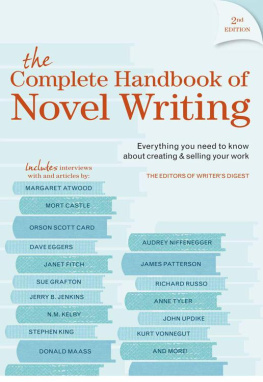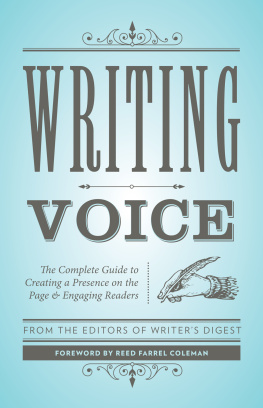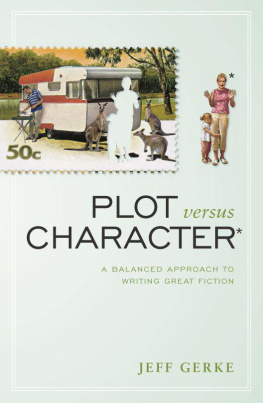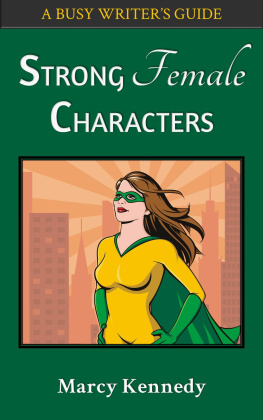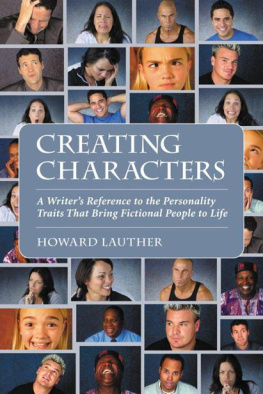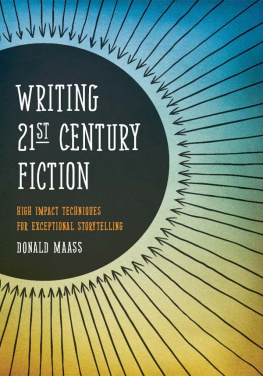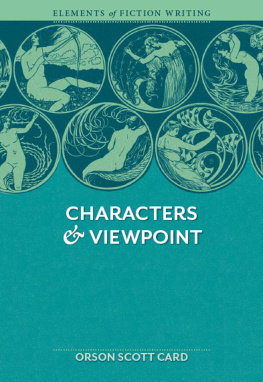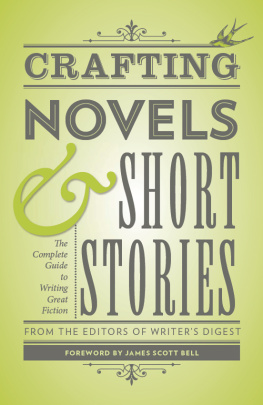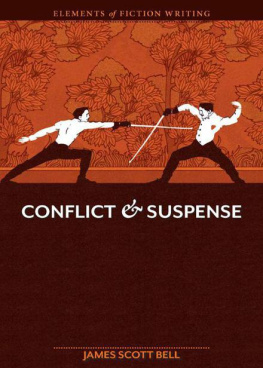CREATING
CHARACTERS


WritersDigest.com
Cincinnati, Ohio
TABLE OF CONTENTS
FOREWORD
BY STEVEN JAMES
I heard a saying once: The fish is in the ocean, and the ocean is in the fish.
It sounds either very self-evident and hardly worth mentioning or very Zen.
Lets go with Zen.
A nugget of wisdom thats paradoxically both easy and hard to crack.
What is the relationship of character to plot? Well, theyre inextricably connected.
How can you pull them apart without unraveling a story?
You cant.
Why not?
Because the character is in the plot, and the plot is in the character.
Stories are more than accounts of events occurring, and theyre more than character studies. Rather, in a narrative, we find characters being revealed and transformed as they face struggles that, while defining them, refine them.
The plot and the character are in each other, serving each other, informing each other.
At its core, a story is about an interesting character trying to accomplish something difficult. If the character isnt captivating or the task isnt compelling, the story suffers. So, when a story drags, you simply make your character more fascinating or the task tougher to accomplish.
No big deal, right?
In theory, yes.
In practice, theres a bit more to it than that.
Once I was reading a novel and the main character was so whiny and immature and annoying that I kept wanting the author to just kill her off and get on with the story.
Needless to say, thats not what you want your readers thinking. They have to care about what happens. If they dont care about the character, they wont care about the conflict. And if they dont care about the conflict, they wont care about the story.
Struggle.
Character.
Plot.
Emotion.
All interwoven when a story is told.
And you have to be at the top of your game as a storyteller these days because youre in a war for peoples attention, and theres never been a time in history when the battle has been fiercer. Think of all the websites, books, video games, movies, apps, and TV shows out there that are vying for your readers time. (Not to mention work and family obligations, hobbies to pursue, 5Ks to run, drag races to attend, bathrooms to remodel, gluten-free cookies to eat.)
Its overwhelming to think about how many distractions and delights our world offers. So heres our goal: fill our stories with fictional characters so enthralling that readers would rather spend time with them than do anything else, even spend time with real people.
Let that sink in for a moment.
Yes, thats right: We want to tell stories so powerful and engaging that our readers will put everything else on holdeven their relationships with other peopleto share their time with the characters weve created.
Presumptuous?
Maybe.
Challenging?
Um. Yeah.
Be wary of anyone who tries to sell you a fill-in-the-blanks approach to creating characters. Theres no formula to it. You cant just add three parts foibles and two parts quirks, toss in a few cups of backstory and motivation, mix, chill, and serve.
Nope.
Not going to fly.
Its tough work, this storytelling business.
But this book will guide you along the path. There are great kernels of wisdom in here. Writing dialogue? Yes, youll learn about that. How to come up with character descriptions, habits, and hobbies? Sure. Ways to weave in desires, fears, worries, hopes, and dreams? Yes, of course.
Some of the advice you may have read before, and itll confirm what youve been thinking. But be ready, because some of it will shatter your assumptions about what makes a story work. However, if you have enough courage to pick up the pieces of your preconceptions, youll find that you can tell a better narrative than ever before by offering the world more well-rounded, memorable, and addictive characters.
Addictive?
Yes.
Because you dont want your reader to set down your book for anything.
In writing circles, people sometimes talk about the importance of creating three-dimensional characters. The two-dimensional type have no depth. Theyre bland and shallow and unremarkable, simply taking up space on the page without ever taking up residence in your readers hearts.
So what about the three-dimensional kind?
Usually that refers to characters who are memorable, who seem real, who jump off the page, who are intriguing, and whom readers will empathize with or aspire to be like.
But there has to be something else, something more.
After all, a corpse has three dimensions, and yet its still just a corpse. It needs that intangible breath of life.
And so do the characters you create.
In the biblical story of creation, God speaks the universe into existence and then shapes Adam from the soil. Adam is three-dimensional but isnt yet alive. Its only when God breathes his spirit on him that he actually comes to life.
As world creators, as architects of the impossible, thats our job as well: to shape characters from the soil of our dreams and breathe life into them.
This book will show you how.
The character is in the plot, and the plot is in the character.
And when they come togetherin ways you are about to discovera story with a life of its own is born.
STEVEN JAMES is the best-selling author of nine novels that have received wide critical acclaim from Publishers Weekly, New York Journal of Books, RT Reviews, Booklist, Library Journal, and many others. He has won three Christy Awards for best suspense and was a finalist for an International Thriller Award for best original paperback. His psychological thriller The Bishop (Revell, 2010) was named Suspense Magazines Book of the Year. Steven has a Masters Degree in Storytelling, serves as a contributing editor for Writers Digest, and has taught writing and storytelling principles around the world. He is the author of Story Trumps Structure: How to Write Unforgettable Fiction by Breaking the Rules (Writers Digest Books, 2014).
INTRODUCTION
Characters are the lifeblood of your storywhether youre writing a short story, a novel, or even a series. Theyre intricately tied to every other element of fiction: plot, description, dialogue, and more. Simply put, a strong story is hard to come by without equally powerful characters.
And, as expected, creating compelling characters can be one of the most difficult tasks for any writer. A character must be believable and true to lifenot an easy task when you consider how characters develop and change as much as anyone in the real world does.
But thats also why characters are so fascinating. Memorable characters arent static and tired; they develop before your eyes as the story or series progresses. It is rewarding to see someone rise from nothing, and heartbreaking to watch a life tear apart.
In turning to this book, youve dedicated yourself to creating the kind of characters that every reader yearns for. Creating Characters compiles the very best advice from top writers and editors on the different stages of character creation and development. With each chapter, youll find something new and unique to assist you in this process.
LET THE EXPERTS GUIDE YOU
Each part of this book will walk you through a different, important aspect of creating the strongest characters possible. Using the tips and advice from experts on the craft, youll learn how to define and shape your characters in compelling and meaningful ways.


